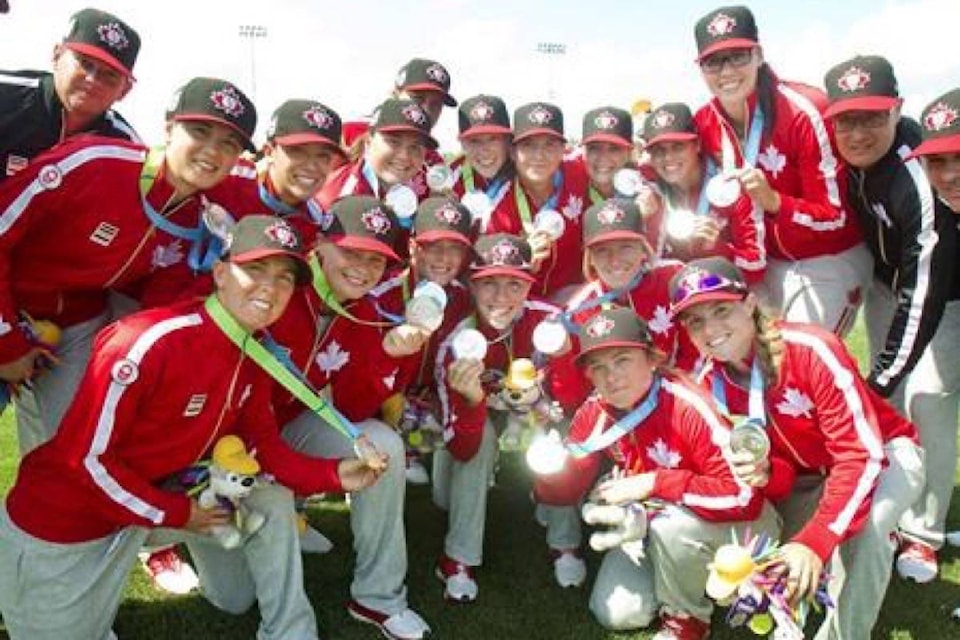When Nicole Luchanski returned home with a silver medal from the last women’s baseball World Cup, she tucked the shiny piece of hardware away in a drawer.
The veteran second baseman hasn’t spent much time admiring that medal — a reminder of a crushing 10-0 loss to Japan — in the two years since.
It’s not that Luchanski doesn’t recognize the accomplishment of second place. It’s that she wants to be better.
“I’m really proud of our team for finishing so high in the rankings consistently but I’ve never been a proponent of silver and bronze in baseball,” the Edmonton native said in a phone interview before the 2018 World Cup in Viera, Fla. “If you’re in track and field or swimming or another individual sport and you come in the top 3, that’s a huge deal.
“But I think of baseball like any other pro team sport. If you don’t win the World Series no one gives you a silver medal.”
The 2016 silver was Luchanski’s second at a World Cup (and third total after one from the 2015 Pan American Games in Toronto). She was also part of two bronze-medal wins since joining the national team in 2005.
But no gold. Not yet, anyway.
Canada, ranked No. 2 behind Japan, opens play Wednesday against No. 10 Hong Kong. The Canadians have finished in the top 4 in every World Cup since the biennial tournament started in 2004, but they don’t consider their place atop the standings as an advantage.
“We’re underdogs, we’re not ranked No. 1,” Luchanski said.
Amanda Asay, a right-handed pitcher who joined the team with Luchanski 13 years ago, agreed.
“I don’t really think we have a target on our backs,” the Prince George, B.C., native said. “This is the eighth World Cup so the countries that are competing for the top spot already know where everyone is at.
“Hopefully our development over the last year will put us ahead of our competition and that’s what we’re aiming for.”
READ MORE: Surrey stays alive in Little League World Series with dramatic walk-off win
Luchanski and Asay were among a handful of players without a hit in the 2016 loss to Japan — Canada only managed two in a game Luchanski described as “not even close.”
A perennial powerhouse, Japan is the tournament’s main competition again this year. No. 3 U.S. and No. 4 Australia also present challenges in the 12-team field.
Asay called Japan’s offence ”very technically sound. They don’t make a lot of mistakes and they put a lot of balls in play.” Luchanski, meanwhile, complimented their pitching staff: “They can throw sliders and off-speed stuff for strikes more consistently than any other country.”
This year’s tournament will be the seventh World Cup for both Asay and Luchanski, who became fast friends when they met years ago when baseball and similar off-field interests sealed their bond.
Luchanski works as a forester and resource analyst in Edmonton while Asay is completing a PhD in forestry at UBC. They’ve worked summer jobs together in the wilderness of Western Canada and played on the same provincial team as teenagers at a time when B.C. was unable to field a full roster of women’s players, instead blending with Alberta and Saskatchewan.
The women’s game has progressed in the west and elsewhere since those days. The two youngest players on Canada’s current team — 16-year-olds Allison Schroder and Emma March — are both from B.C.
“I see the effort they put in around here,” Asay said. “They’re promoting the women’s game a ton more than when I was growing up.”
But while women’s baseball is growing across Canada, the sport still doesn’t seem to get much attention.
Luchanski said one of the problems is the lack of TV coverage for the women’s team, pointing to the 2015 Pan Am Games — the first international multisport event to feature women’s baseball — as a missed opportunity to showcase the sport.
“That was our chance to have a young girl turn on the TV and see that she could play baseball,” Luchanski said. “I know there were a ton of sports that they were trying to get on TV but it seemed we couldn’t even get a highlight.
“We keep trying (to get more exposure) but I don’t know that we’ve really gotten anywhere.”
Asay said she often gets the common misconception that she plays softball — “people are still kind of shocked that Canada has a women’s baseball team” — but she sees those moments as opportunities to educate people on the program.
“That’s just the reality of our situation,” Asay said. “We’re not that well known, we’re not well broadcast, it’s not well advertised.
“We’ll keep fighting as hard as we can to get more exposure, to let people know that we exist and to let young girls know there’s a future in baseball for them.”
Melissa Couto, The Canadian Press
Like us on Facebook and follow us on Twitter.
